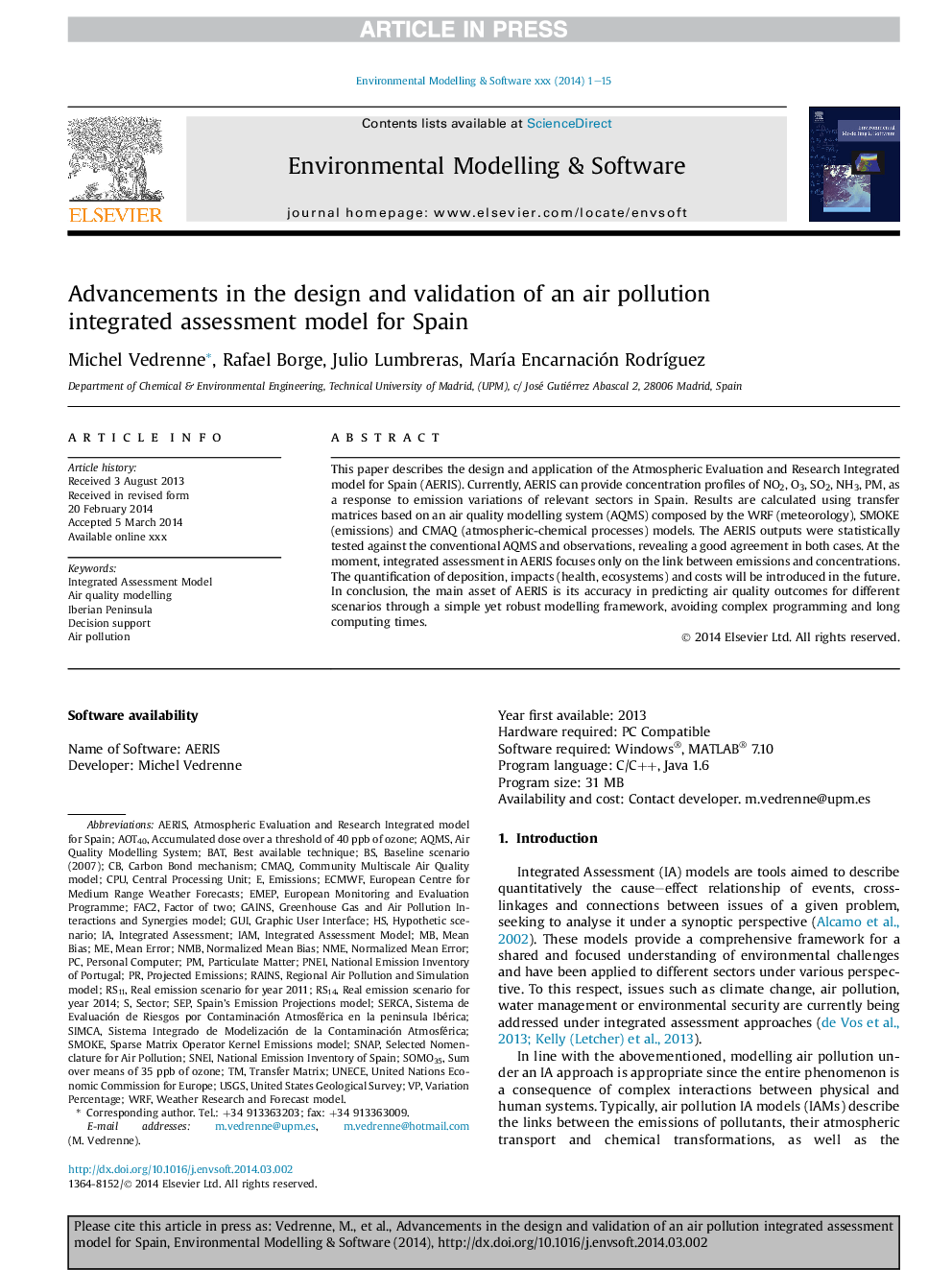| Article ID | Journal | Published Year | Pages | File Type |
|---|---|---|---|---|
| 6963836 | Environmental Modelling & Software | 2014 | 15 Pages |
Abstract
This paper describes the design and application of the Atmospheric Evaluation and Research Integrated model for Spain (AERIS). Currently, AERIS can provide concentration profiles of NO2, O3, SO2, NH3, PM, as a response to emission variations of relevant sectors in Spain. Results are calculated using transfer matrices based on an air quality modelling system (AQMS) composed by the WRF (meteorology), SMOKE (emissions) and CMAQ (atmospheric-chemical processes) models. The AERIS outputs were statistically tested against the conventional AQMS and observations, revealing a good agreement in both cases. At the moment, integrated assessment in AERIS focuses only on the link between emissions and concentrations. The quantification of deposition, impacts (health, ecosystems) and costs will be introduced in the future. In conclusion, the main asset of AERIS is its accuracy in predicting air quality outcomes for different scenarios through a simple yet robust modelling framework, avoiding complex programming and long computing times.
Keywords
SIMCASEPNMBUSGSECMWFEMEPEuropean Monitoring and Evaluation ProgrammeAOT40CMAQBATCommunity multiscale air quality modelRainsAQMSWRFMean errorUNECECPUmean biasnMEAir pollutionIntegrated assessmentEmissionsSectorGAINSBest Available TechniqueSmokeparticulate mattergraphic user interfaceGUIUnited States Geological SurveyIberian PeninsulaSNAPSERCATransfer matrixIntegrated assessment modelAir quality modellingIAMCarbon Bond Mechanismcentral processing unitDecision supportpersonal computerUnited Nations Economic Commission for Europe
Related Topics
Physical Sciences and Engineering
Computer Science
Software
Authors
Michel Vedrenne, Rafael Borge, Julio Lumbreras, MarÃa Encarnación RodrÃguez,
